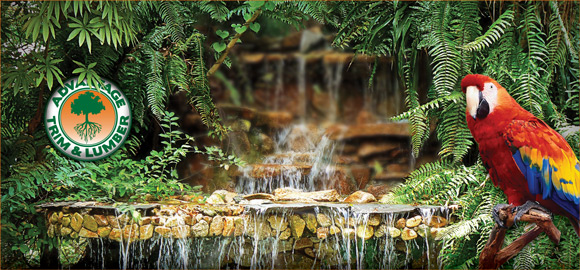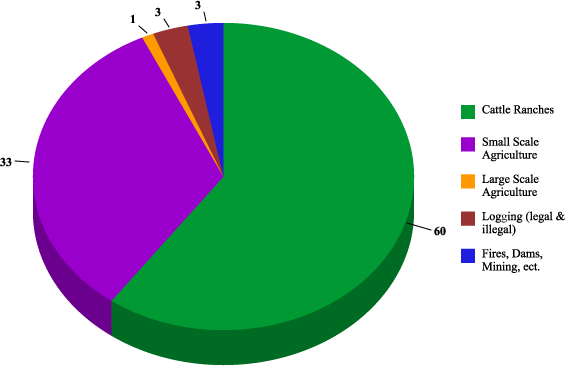Our Environmental Concerns
Help us save the rainforest.

Forests around the world are under increasing pressure to satisfy the needs of people. Forests are home to many plant and animal species, including humans. They perform the important function of converting carbon dioxide to oxygen. Trees are also the source of the most abundant, environmentally – friendly and a useful material known to man as WOOD. It is the most widely – used fuel for cooking and heating, and it is the basic material for shelter.
Tropical forest are under particular pressure as they are located in developing countries where many people are struggling on a daily basis merely to survive. You may have heard some claims about the threats facing the rainforests and about people who’s responsible. Let’s look at the truth, you may be surprised! Click HERE to see a report about responsibly harvesting lumber.
Sustainable Forestry From AdvantageLumber.com


Is there such a thing as sustainable forestry? What kind of environmental impact does logging really have in heavily regulated areas like the Amazon? Discover how AdvantageLumber.com provides you with decking that originates from well-managed forests. As a certified FSC wood supplier, you'll also learn that unlike agriculture or cattle ranching, logging actually helps preserve the rainforest.

Help Us Prevent Slash & Burning of the Amazon! This track of land, over 2,000 acres, was burnt by a cattle farmer to make room for grazing. We pride ourselves on the fact that we save thousands of acres every year from being burnt for agricultural cash cropping and cattle land. By selectively harvesting a few trees per acre we can assure that the forest will be able to be reharvested in as little as 10 years. This ensures that the forest will not only survive, but also improve for many generations to come. By buying tropical timbers from a reputable company that practices good forestry, you are helping to save the forest by putting a value on the timber so that the land is not burnt. It may seem unbelievable that someone would burn forest that contained valuable timber, but the fact is that for a cattle farmer it is more profitable than to go through the bureaucracy of obtaining the necessary environmental surveys and obtaining the slew of permits needed to harvest, mill, and export even a few trees per acre. Click HERE to see a report about responsibly harvesting lumber.
The Effects of Cattle Ranching
Since the 1970’s the leading cause of deforestation in the Brazilian Amazon is Cattle Ranching. When cattle ranchers first came to the Amazon they contributed to only 30% of all deforestation. However that number increased dramatically when traditional cattle farming was transformed into the large-scale ranching business that exists today. According to The Center for International Forestry Research (CIFOR), "between 1990 and 2001 the percentage of Europe's processed meat imports that came from Brazil rose from 40 to 74 percent" and by 2003 "for the first time ever, the growth in Brazilian cattle production—80 percent of which was in the Amazon—was largely export driven." Click HERE to see a report about responsibly harvesting lumber.
Some Facts About Tropical Deforestation
Brazil lost nearly 150,000 square kilometers of forest (an area larger than Greece) between May 2000 and August 2006. Since 1970, over 600,000 square kilometers (232,000 square miles) of Amazon rainforest have been destroyed. Why is Brazil losing so much forest?
Why is the Brazilian Amazon Being Destroyed?
Causes of Deforestation in the Amazon (2000-2005)
The logging industry contributes only a small percentage (3%) of Amazon deforestation and yet there are several different final destinations for this lumber. Amazon logging supplies both the international and domestic lumber industries. So of the total 3 percent of logging an even smaller percentage is actually shipped outside of Brazil for international use. Click HERE to see a report about responsibly harvesting lumber.
Although the wood and wood products industry is a very small part of the problem, it can be a large part of the solution.
A significant proportion of the billions of dollars this international market represents make its way back to the forests and provides resources to address the real problems facing the forests; poverty & population pressures.
| Country | Total Employed |
Percent of Export | Value of Forest Products Exports |
| Bolivia | 30,000 Families | 50% | $112 million |
| Brazil | - | 3% | $1.5 billion |
| Ghana | 75,000 | 30% | $93 million |
| Malaysia | 200,000 | 9% | $5 billion |
| Indonesia | 4,000,000 | 16% | $6.4 billion |
| USA | 1,613,000 | 4% | $18 billion |
| Cameroon | 50,000 | 12% | $200 million |
| Sources: AFaPA facts and figures U.S. Forest – 1995: Sustainable forest management in Indonesia, 1993/94; Tropical Forestry Action Plan, 1993; FAD yearbook 1991; Camara National Forestal Directory 1994 | |||
Good markets for wood & wood products will help save the forest. A thriving international market provides an economic reason to carefully manage them. Bans & boycotts of tropical timber products are counterproductive to the purported goal of saving the rain forest in that they reduce the value of the forested land. If we stop buying these products, we would remove the incentive to manage the forests and we would actually encourage their conversion to other uses, which is what we need to avoid. The land with trees MUST be more valuable than the land without them. Click HERE to see a report about responsibly harvesting lumber.
Save the Rainforests! Buy Tropical Wood Products from Responsible Suppliers!!!
Sources
(1) Study by the institute for Weltwirtschaft (TFW) Kiel for Greenpeace E. V. Hamburg 1992.
(2) Economic Linkages between the International Trade in Tropical Timber and the Sustainable Management of Tropical Forest – London Environmental economics centre – 1992.
(3) ITTO – 1994 Report
(4) Calculation
(5) http://www.mongabay.com/
Call Us Toll Free for a Decking Quote
Toll Free 1.877.232.3915
